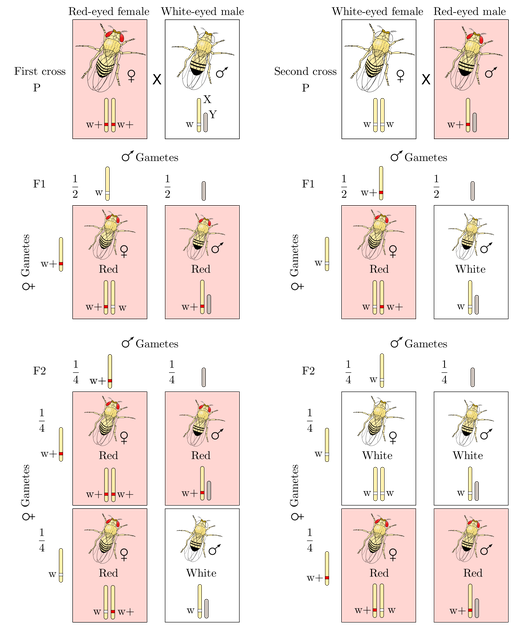Sex linkage is the connection of the allele with the chromosomal sex of the individual (XX for woman
and XY for man in mammals). Inheritance probabilities of sex-linked traits are depend directly of the sex
of carrier parent and sex of the child. These alleles can be X-linked or Y-linked, and dominante or recessive as well.
Since humans have many more genes on the X than the Y, there are many more X-linked traits than Y-linked.
Sex linkage was first discovered by Thomas Morgan in 1910, who observed a disproportionate percentage of white-eyed male fruit flies. Morgan's experiment involved crossing purebred red-eyed female fruit flies with these mutant white-eyed males. The result was exclusively red-eyed individuals of both sexes. When these individuals were crossed, they produced some white-eyed males, but no white-eyed females. See the first column in the figure below.
Morgan's conclusion was that the trait for eye color must be encoded on the X chromosome, and that white eyes must represent the recessive allele. In males, if the recessive allele is present, then it is the only allele, and white eyes are demonstrated; yet in females, both copies of the recessive allele must be manifested in order to exhibit white eyes. X and Y chromosomes are still passed down to offspring with probability 1/2, just like autosomes. Check your understanding of such an X-linked trait with Morgan's second experiment, depicted in the second column of the figure below.
